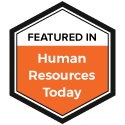As misclassification suits arise from ill-defined job descriptions in the gig economy, how employees utilize their workdays is also becoming an issue. Who is managing and tracking how workers spend their time on the job? A new survey indicates that managers seem to be leaving that task to employees. Employee tracking software company TSheets conducted a survey of 954 employees (18 and over) — 16% were salaried employees, and 66% were hourly employees — to see who tracks their time. The survey found that 18% said their managers tracked their time, leaving the other 82% to track it on their own.
The survey revealed that a quarter of those employees tracking their own time did it manually using paper or a spreadsheet, and another 10% used traditional punch clocks. These methods can lead to businesses receiving inaccurate information. Of the employees surveyed, 16% admitted to buddy punching (clocking in for another employee). Two-thirds said they had to correct their timesheets, some having to do it often. Half of them admitted to time theft.
Time and attendance is increasingly becoming an important data point for compliance with government regulations, such as the Patient Protection and Affordable Care Act (ACA) and the Davis-Bacon Act of 1931, a law passed to protect the wages for industries like mechanics and other laborers. The U.S. Department of Labor says that 89% of Davis-Bacon violations come from construction, and also the newly minted mobile workforce. Violations have totaled $197 million in back wages since 1985. A critical part of compliance with that act is to submit a certified payroll report, which includes an accurate accounting of the number of hours worked by each employee. For the ACA, tracking the time and attendance of workers to determine if they are full-time employees is a critical part of compliance filings with the IRS. Organizations that gather, consolidate and validate this time and attendance information monthly for ACA compliance purposes find they have an advantage in managing the mandated IRS filing process, and may help them avoid significant penalties for inaccurate, incomplete and/or late filings.
No matter your industry or business, with more and more companies allowing their employees to work remotely, managing time is of the essence, both for compliance with regulations and for business purposes, such as meeting deadlines on projects and managing overtime. If your workforce is still tracking time with a pen and pad or time clock, it’s time to consider new ways to track employee time.
There is a diverse set of software options available to businesses at affordable prices. Some software, like Humanefits, and apps, like Humanefits for Quickbooks, not only track time and attendance, but can be used to gather and consolidate additional workforce data to help companies identify tax credit opportunities, manage regulatory compliance with regulations such as the Affordable Care Act and EEO-1 reporting, and provide important business insights that can improve operational and financial performance.
If a survey of about 1,000 employees shows only 18% of them have a manager assisting in tracking their time, how many businesses are missing out on taking full advantage of this strategic information? An understanding by management on how employees are using the allotted hours in their workday can ensure they are working efficiently and effectively. Time and attendance is an important piece of business intelligence that can make a difference in the success of your business, not to mention your ability to comply with government regulations. It’s too important to leave to employees with paper and pens.






